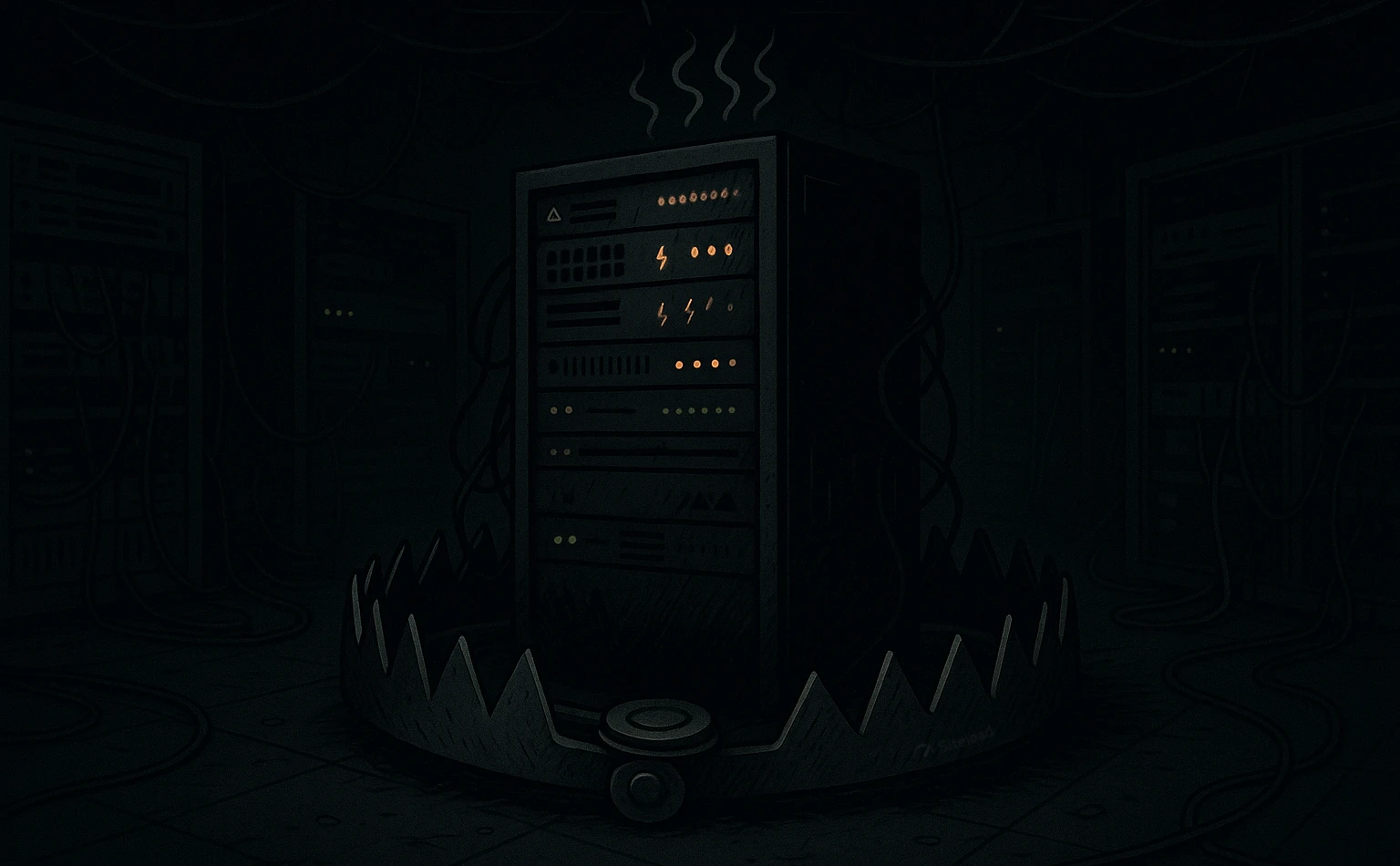The hidden performance trap
Why your 404 page can crash your entire website

Introduction: why performance is about more than speed scores
Every millisecond counts when it comes to your website’s performance. A slow-loading page doesn’t just frustrate users - it can cost real conversions and revenue.
Most website owners focus on the visible parts: optimizing the homepage, product pages, and checkout flow. But what if the real issue hides in a place no one checks - your 404 page?
At Siteload, we often see businesses with strong caching setups still suffer from random slowdowns or server overloads. In many cases, the culprit is surprisingly simple: uncached error pages that quietly overload PHP. These pages act like invisible traps, draining server capacity when traffic spikes - even if everything else is optimized.
The experiment: cached vs. uncached pages in WordPress
We ran a test in a standard WordPress environment to compare two types of pages:
- Cached Homepage - served as a pre-generated HTML file directly by Nginx, with no PHP processing.
- Uncached 404 Page - dynamically generated by WordPress and processed through php-fpm.
To simulate a real-world traffic spike, we sent 500 requests, grouped into batches of 100 parallel requests, imitating 100 users visiting the page at once.
The results: where the server starts to break down
The performance gap between the two pages was striking - and the graph illustrates it clearly.

- Main page (cached): stays under ~300 ms
- 404 page (no cache): spikes beyond 8–10 seconds after ~100 requests
Visual takeaway: caching doesn’t just make your site “faster” - it keeps your backend alive under load.
- The orange line represents the cached homepage, served directly by Nginx. It stayed stable and low throughout the test, with average response times of just a few hundred milliseconds, even under 500 requests.
- The purple line shows the uncached 404 page processed by php-fpm. After roughly the 100th request, the curve started to climb sharply - reaching over 8,000–10,000 milliseconds for later requests. This exponential rise shows how quickly PHP workers became saturated, creating a backlog that slowed every new response.
In short: while Nginx handled static cached content effortlessly, php-fpm on the uncached page hit its limits fast. Once that happened, the server struggled to recover - every subsequent request waited longer in the queue.
What it means for real websites
Now imagine your WordPress site is an online store. Most pages are cached - perfect. But if your 404 page isn’t, and bots or users hit dozens of broken URLs, those PHP processes start stacking up.
The danger?
All those unnecessary PHP requests compete with real customers trying to check out or submit forms.
Your checkout page, which needs to send a quick AJAX request to your own server, now gets stuck behind that traffic jam. The result: users can’t pay, your site “freezes” and sales disappear - all because of one unoptimized 404 page.
That’s exactly the kind of invisible trap that’s easy to overlook during regular testing - and the kind that Siteload helps uncover before it hurts your business.
Key insights
- Even one uncached page can break performance stability. A single dynamic endpoint can overload php-fpm and block legitimate traffic.
- Nginx caching dramatically reduces server stress. Serving static HTML cuts down response time and keeps performance consistent under load.
- Serving static HTML cuts down response time and keeps performance consistent under load. They're hit often (by bots, crawlers, and users), so caching them prevents silent overload.
Conclusion: a small fix that prevents big outages
The lesson is simple - cache everything you can, even error responses.
A single configuration change can turn a hidden vulnerability into a performance win.
At Siteload, we consistently encounter this issue across diverse CMS ecosystems. The underlying mechanics are often the same - but with proper insight and fine-tuned caching, these bottlenecks can be neutralized in minutes instead of turning into hours of downtime.
Siteload helps website owners detect exactly these hidden performance traps.
By simulating real-world traffic, it reveals how your site behaves under pressure - showing not just which pages load slowly, but why. You’ll see when PHP becomes a bottleneck, when cache misconfigurations occur, and how to fix them before they impact users.
The same behavior can be seen across modern platforms - whether the backend runs on Node.js, Python, or another framework. Once dynamic requests bypass caching, the underlying logic of any server stack faces the same challenge: too many concurrent processes, too little headroom. That’s where Siteload helps turn complex load behavior into clear, actionable insights.
Before your next traffic spike or promotion, take a moment to check how your 404 behaves under load.
If you’re not sure where the weak spots are - let your next speed test reveal them. Tools like Siteload help you understand not just how fast your site loads, but how resilient it truly is.
Because true performance isn’t just about speed - it’s about stability, predictability, and trust.